#Urdu Romantic Novels
Text
0 notes
Text
مرنے والوں کے لئے تو کوئی بھی نہیں روتا، ہم سب تو اپنے اپنے نقصان پہ روتے ہیں... اور ہمارا غم تو بس یہی ہوتا ہے کہ وہ ہمیں اکیلا چھوڑ کر چلا گیا
People seldom shed tears for the departed; instead, we weep for our personal losses, mourning the fact that they've left us behind.
-Halima
#urdu novel#jannat k pattay#nemrah ahmed#novel#romantic academia#dark coffee#dark academia#haya suleiman#cihan sikandar#novel writing
21 notes
·
View notes
Text
khubsurati ek neimat hai, lekin sabse zyada khubsurat apki zuban hai...
chahe toh dil jeet le, chahe toh dil tod de...
-hazrat ali
#urdu literature#urdu poetry#urdu#urdu ghazal#urdu posts#urdu adab#shayari#poetry#urdu lines#wattpad#ishq#novels#quotes#poet#mohobbat#romanticism#romantic academia#pyar#desi academia#dark academia#desiblr#desi#desi tag#desi aesthetic#hindi
35 notes
·
View notes
Text
#urdu novels#bold romantic urdu novels#godan#godan in hindi#godan premchand#rashmirathi#rashmirathi in hindi#madhushala#madhushala by harivansh rai bachchan#best urdu books#buy urdu books.#online urdu books#best urdu novels#fragments of being and other stories
2 notes
·
View notes
Text
#urdu#novel#books#romantic novel#urdu novels#new books#books and literature#Karakoram Ka Taj Mahal Novel By Nimra Ahmed
0 notes
Text
Tell Me How You Really Feel by Aminah Mae Safi - Book Review
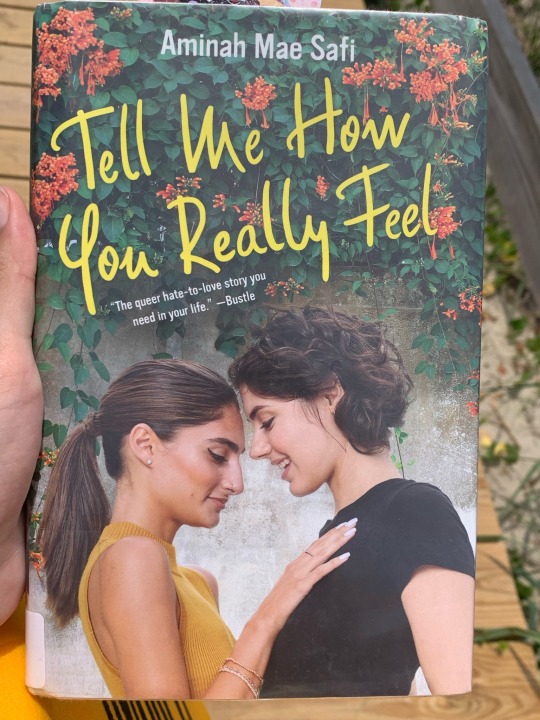
9.5/10 ⭐️⭐️⭐️⭐️🌟
TWs: car accident, cursing, sexism, panic attacks, abandonment
(TWs are ranked in order of severity, please take them seriously!)
Summary
“The first time Sana Khan asked out a girl-Rachel Recht--it went so badly that she never did it again. Rachel is a film buff and aspiring director, and she's seen Carrie enough times to learn you can never trust cheerleaders (and beautiful people). Rachel was furious that Sana tried to prank her by asking her on a date.
But when it comes time for Rachel to cast her senior project, she realizes that there's no more perfect lead than Sana--the girl she's sneered at in the halls for the past three years. And poor Sana--she says yes. She never did really get over that first crush, even if Rachel can barely stand to be in the same room as her.
Told in alternative viewpoints and set against the backdrop of Los Angeles in the springtime, when the rainy season rolls in and the Santa Ana's can still blow--these two girls are about to learn that in the city of dreams, anything is possible--even love.”
TL;DR Tell Me How You Really Feel is an ode to romantic comedies, following two girls on opposite sides of the social scale as they work together to make a movie and try very hard not to fall in love. Cheerleader meets film nerd, enemies to lovers.

I found this book through one of those tik tok videos where someone is flinging books off a pile at light speed under a caption “queer SA (South Asian) books you need to read”. I absolutely love those videos, even though they test my screenshotting abilities.
It’s been a while since I updated this blog(?) and that’s because I’ve been very busy finishing out the school year and reading every gay book I could get my hands on over the course of pride month. I will be posting reviews of those books soon, but in a quick review so far this month I’ve read:
• Last Night At The Telegraph Club
• Unearthed (graphic novel)
• Café con Leche
• Eighty Days (graphic novel)
• Tell Me How You Really Feel (this review!)
• The Raven Cycle (yes all 4 books, no I will not be reviewing)
Honorable mention: All 50 episodes of The Untamed (SUCH a good cdrama) & Season 1 of Stranger Things
I’ve realized over the course of this book binge that I prefer my enemies to lovers to have good reasoning - or at least understandable reasoning on both sides. My favorite part is seeing how that can morph into love without either realizing until it’s too late *cue evil laughter*
Tell Me How You Really Feel does that perfectly. I especially loved how it was written - the characters were flawed, raw and dynamic, and the writing style reminded me of books by Nicola Yoon (The Sun is Also a Star, Everything Everything). The romance isn’t necessarily the focus - it’s shoved in on the shelf along with everything else happening in the characters lives. The story simply starts (ish) and ends with the life of their romance within that.
And because this is a gay high school romance between a cheerleader and a film nerd, of course there are a million movie references, from Pakeezah to Pretty in Pink.

Meena Kumari 😩🧎🏽♀️
But real quick, let’s talk
Representation
Sana Khan and Rachel Recht, the main characters, are both into women. Although their sexualities aren’t explicitly stated, this part is made very clear.
Sana is desi, and Persian and Indian if I remember correctly? Her family is very mixed and has a lot of languages (Bengali, Urdu, Arabic, Persian, French, etc). She is second-gen American, while I’m pretty sure Rachel is first-gen (at least on her mom’s side).
Rachel is Mexican and Jewish, and her family consists of just her and her father (and their larger community) in comparison to Sana’s many cousins and aunties/uncles. Her full name is Rachel Consuela Recht, which I’m guessing is to show her mixed cultures.
For Sana I can somewhat call this an own voices review on representation, but please keep in mind the Indian (and larger desi community) is not a monolith & we won’t all agree on my own interpretation.
What I really liked about representation for Sana and her family was it is very women-centric. Her grandmother, Mamani, is very clearly the matriarch, and Farrah, Sana’s mom, is a single mother working in the film industry. In western literature desi culture is typically portrayed as oppressing women, especially in Muslim households, but this stereotype is flipped on its head by Sana’s family. It also showed how within a religion certain family members can be more religious than others - Sana & her Mamani are more religious (praying regularly, not drinking, etc) while Farrah is less so - and there’s no negative connotation on it.
Rachel and Sana both engage in religious holidays over the course of the book (Norwuz for Sana, Passover for Rachel). Since I’m neither Muslim or Jewish, it was interesting to learn more about the holidays and how they’re celebrated.
Single parenting rep (Rachel raised by her dad, Sana raised by her mom) was also really good. As someone being raised by a single mom & at one point a single dad, the struggle is portrayed really well.
Finally, I love that Sana fills the character of pretty perfect Gilmore-girls-esque cheerleader. Brown women don’t often get to be portrayed as lovely and soft and also raw and real at the same time. It really hit my heart 💗 Sana’s features are seen as beautiful by everyone around her - like a commonly accepted fact. She’s the official “pretty girl” of her school - and so much more beneath that.
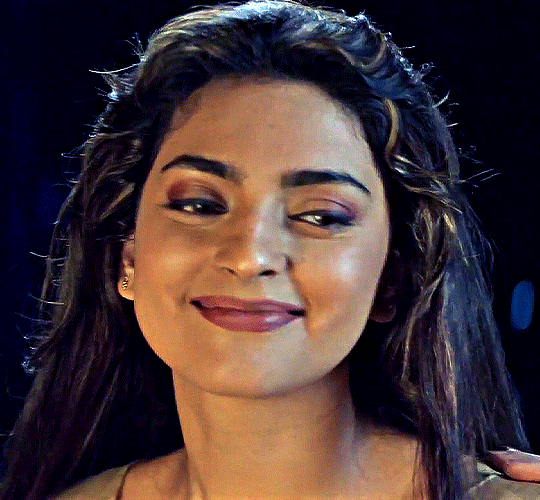
What I Loved:
Aside from the good rep, the way the book is written is just ✨ poetic ✨
“Sana smiled, and suddenly Rachel understood every stupid love poem comparing the beloved to the sun.”
HOW DO I RECOVER??
Mainly though, I think this book came at the right time for me. Sana’s situation was really relatable to me, and her storyline actually helped me figure out some stuff in my own life (no spoilers!)
If you’re worried about the future, or planning to become a doctor or lawyer - read this book.
I’m also a sucker for big movie style gestures so this was a plus. I could see how the book was going to end generally way before the end, and that made it more of a comfort read than an “intellectual” read. I loved the character development as well - some serious words of wisdom in there!
As someone who wants to go to college in LA, and can’t afford to visit, this is as close as it gets to seeing what life there is like for me 😂 I’m curious to see what those Santa Anas feel like!

Why I couldn’t give it a 10:
I wasn’t the biggest fan of Rachel’s character to be honest. She hated Sana so much at the beginning, for something that had happened in their freshman year (the story takes place in their senior year). I could understand animosity, but it was another level. It made me think Rachel had anger issues - she seemed really self pitying and insecure. Which would have been fine - I’m all for character development - if she had realized that. But Rachel never seemed to come to terms with the fact that she had treated Sana like sh*t at every turn for nearly 4 years. It’s not that they don’t fall in love (this is a love story) but she doesn’t really feel remorseful for how she acted.
On set, when she’s directing the crew, the way she treated them reminded me of Michael Scott from the Office 😭

I also wish there had been more focus on the other characters in the book. Farrah, Sana’s mom, and Daniel, Rachel’s dad, kind of felt like glorified plot devices, especially near the end. Same goes for Diesel, Sana’s so-called best friend. We don’t actually see a lot of their relationship aside from Diesel giving her rides from school and then playing video games with her. In the end, his purpose was also a little plot device-y, a little serving the main ship, etc.
I liked that Diesel subverted the dumb insensitive jock trope, but I would have loved to see more of him and Maddie (another cheerleader)!
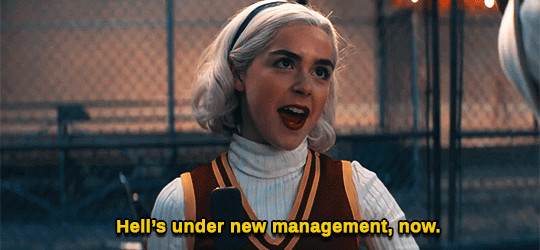
^unrelated but I love this scene (very scary cheerleader)
Overall, the book was a satisfying beach read (as in, I literally read it on the beach). Feel good, decent character development (on Sana’s part), and it gave me something I’d really been searching for: an enemies to lovers story between queer women of color in high school. Like babe- this is my niche!!

And yes, I cried at the end.
I sincerely recommend to fans of:
The Sun is Also A Star
Everything Everything
Movies (if you’re a movie nerd, you’re going to get wayy more of these references than I did)
But I’m A Cheerleader (movie)
Sense 8 (show) especially if you like the wlw couple
Most of my reviews for this month are going to be LGBTQ+ stories between PoC 🏳️🌈 so stay tuned!
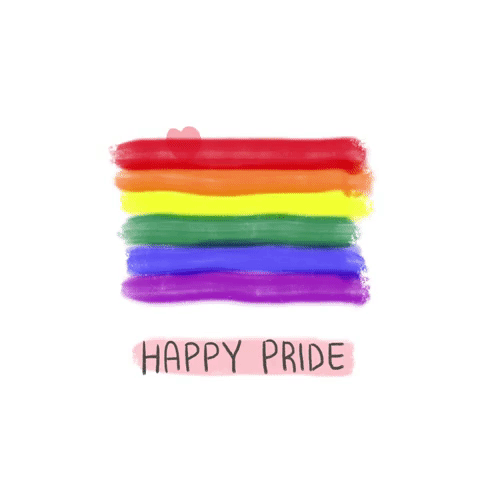
#book review#bipocbookstagram#poc books#booklr#diverse reads#lgbtq books#tell me how you really feel#aminah mae safi#lets go lesbians#everything everything#the sun is also a star#queer enemies to lovers#enemiestolovers#cheerleader#film nerd#happy pride 🌈#queer bipoc#queer desi
29 notes
·
View notes
Text
Books read in May:
The Ministry of Utmost Happiness by Arundhati Roy: Easily the best book I have read so far this year. Experimental novels my beloved. The writing, of course, is beautiful and heart-wrenching and also really really funny. She uses irreverence both to sneer at nationalism and as a way of emphasizing the sadness and smallness of the ordinary concerns of her marginal characters. The whole story is different people for whom modern Indian society has no place coming together and creating a place for themselves, literally in a graveyard. The background and backdrop for many of these characters, and the story of their shattering that ultimately leads them to the graveyard, is Kashmir and anti-Islamic violence in Punjab. I definitely didn’t get everything in this book because I, as a white USAmerican, do not have the cultural and political context. And the book doesn’t spoonfeed that to you. I had to keep my phone handy to look stuff up, and I loved that. I think more books should decide that if the audience doesn’t know something that’s the audience’s problem. The dialogue is often in Urdu or Hindi, with the English translation following, which, again I loved. This book is definitely not for everyone, as it is very meandering and uses unorthodox methods of storytelling (a character finds a notebook, containing dark, tongue-in-cheek parodies of children’s reading exercises which together tell the story of a brutal day of atrocities. A newspaper relates a parable about futility and endless violence, but it is important who published the paper, and who is reading it, etc). But for me it’s now in my top 10.
The Taste of Sugar by Marisel Vera. This was a novel about a Puerto Rican couple in the late 19th c who lose their coffee farm after the American annexation and a disastrous hurricane, and are recruited by the US agents to go to Hawaii to farm sugar cane. I wanted to read this because I didn’t know anything about this history. I learned a lot! The author’s research was impeccable. Her writing was best when she was either giving sweeping descriptions of what was happening in a very zoomed out way (so, her description of the aftermath of the US annexation or the aftermath of the hurricane and the food shortages), or when she was writing a character speaking to another character as an uninterrupted monologue. Unfortunately, I found the way she constructed her characters fairly jarring. The main woman was written like a heroine from a romantic comedy, and this story was very much not that. I think her feeling constantly out of place was intentional but for me it didn’t work. I also... so this may just be me being a privileged asshole who is used to being catered to. But. She also had much of the dialogue in Spanish (as in, whole pages/paragraphs), but there was no translation, and (this would be on the publisher) no indication that the book was bilingual. So I wound up having to look up a lot of stuff, but not in a way I found... conducive to the reading experience or helpful. I did learn some phrases though, so that was cool! She also did something which felt kind of uncomfortable, which was giving the main male character a black half-brother who, for the first half of the book, only existed so the mc could show off how nice and good he was. This brother then turned out to be gay in the last... 10 pages, and nothing was done with it other than a very poorly executed “oh shit I think I like guys” moment... and then he gets sentenced to hard labor and we never learn if he survives. She also revealed that the mc’s mom and her “companion” were in a relationship right after these two women get up and walk out into the worst of the hurricane for NO REASON and die. And like... I get that you want to include gay people in your stories. But please practice more before attempting. I also wish she had spent more time on what happens to them once they’re in Hawaii, and the nascent friendship/organizing beginning to happen with the Japanese workers. She did give her women characters friends though! Which was nice! Glad I read it, but don’t plan to read it again.
Good and Mad: The Revolutionary Power of Women’s Anger, Rebecca Traister. I wanted this to be a different book than it was. I thought it was going to be a deep dive into the politics etc of anger and women. There was some of that, though most of it was pretty surface level. Mostly it was the author processing 2016-2018. Reading her hopes and expectations in 2022 was... disheartening, knowing, for example, that many of the women running for office in 2018 lost, knowing how the 2020 primary turned out, being in the middle of the metoo backlash, etc. She says at the end she wrote this in 4 months, and it shows. There were also so many places where she almost landed on some really scintillating analysis and fell jussst short of it, and instead either left it on an open question, or landed on an analysis which was fine but, imo, not quite there. Which is always frustrating. I think it’s a good feminism 101 book for someone who is outraged by the misogyny they see around them but is having trouble shedding the patriarchal discomfort around actually being mad at men. Traister is straight and happily partnered with a man, and she discusses how she balanced that with her anger at men as a class post 2016, and how her partner was supportive. Which is nice. However, not something I got much out of.
Swamplandia! Karen Russell. Did Not Finish. This is the converse of the NK Jemisin short stories. I love Russell’s short stories. Vampires in a Lemon Grove sold me on short stories as equally valuable to novels! Her long fiction is terrible. This is just... she read Bastard out of Carolina and was like “oh but what if this were whimsical and in Florida and straight” and nobody stopped her. Honey, you are not Dorothy Allison and you never will be so stop. Pacing was awful, tone was all over the place, it felt like multiple short stories had collided in a bad way. Her narrator’s voice was great! But the plot was just horrendous. WHY did she think a graphic sexual assault on a 13/14 year old was appropriate to include in a book that frequently indulges in being silly?? I know why, it’s because this kind of storytelling where silliness and unspeakably awful things juxtapose is a stable of a certain type of southern literature, but her execution of it was SO BAD. This could either have been a fun humorous book about a kid trying to save his family’s outdated and dysfunctional alligator theme park by working at not-universal-studios, or it could have been a good gothic horror story about two teen girls left alone in the Everglades being lured into the swamp by dubiously intentioned ghosts and men. But she tried to make it both and it sucked.
6 notes
·
View notes
Text
2021-2022 Women in Translation Roundup Part 3: Travelling the (Queer) World
Continuing my goal of reading more writers from across the globe from more languages, in the last year I had the bonus of reviewing several books with LGBTQIA+ themes and/or characters including a few by queer writers. (Also see my Part 1 round-up this year for a few other such books from French.)

All the Roads are Open by Annemarie Schwarzenbach
The travelogue essay/memoir of a road trip to Afghanistan in 1939 by a Swiss heiress who has become a European cult figure.

All This I Will Give to You by Dolores Redondo
From a popular Spanish writer this is another long chilling thriller, with a successful novelist trying to sort through his grief, anger, and questions after the sudden death of his husband when nearly everyone he meets in picturesque Galicia is hiding or lying about something.
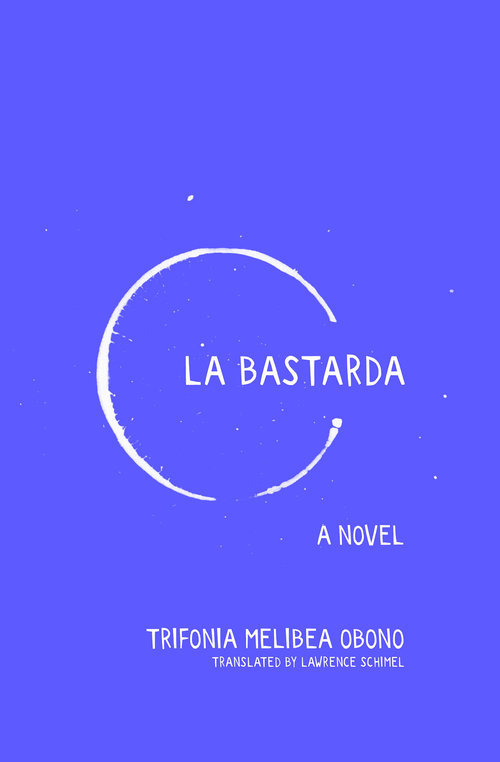
La Bastarda by Trifonia Melibea Obono
Bisexual feminist Trifonia Melibea Obono’s short YA novel is the first to appear in English translation by a woman from Equatoria Guinea.
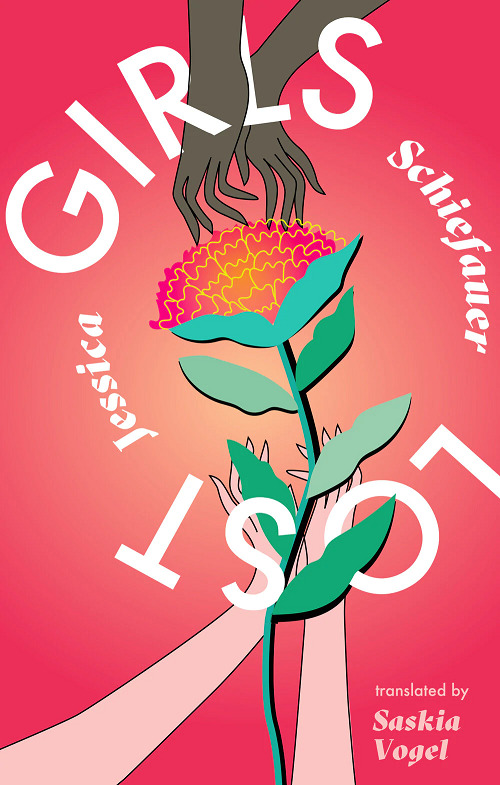
Girls Lost by Jessica Schiefauer
A dark YA fairytale like book in a magical realism vein utilizing gender transformation whose original Swedish title translates to ‘The Boys’.

Last Words from Montmartre by Qiu Miaojin
A fiction book made up of a series of letters that can be read in any order by famous Taiwanese lesbian writer Qiu Miaojin and published posthumously after her own suicide.

The last year has been particularly notable for Chinese danmei novels (m/m romantic or sexual fiction) appearing officially in English.
A huge global juggernaut spanning mediums the Grandmaster of Demonic Cultivation by MXTX is a supernatural fantasy series also in the xianxia (immortal heroes) genre.
Little Mushroom by Shisi is a dark dystopian sci-fi series following one xenogenic little mushroom who becomes a doppelganger of a human on a quest while humanity precariously hangs in the balance.

Paradise Rot by Jenny Hval
A bizarre and sensual eco-gothic debut novel where a biology student from Norway with an interest in mycology pursuing her education aboard encounters an unusual roommate.
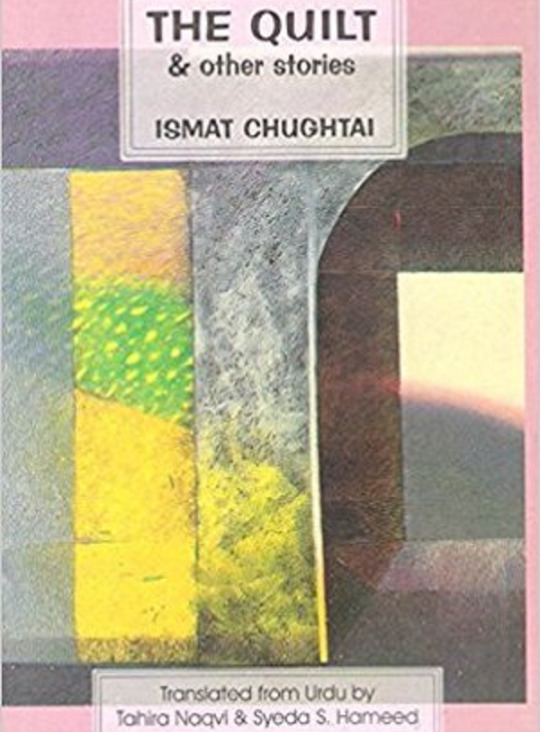
The Quilt and other stories by Ismat Chughtai
A story collection named from the (in)famous piece of the Indian Urdu novelist writing where she was faced with defending herself and her writing against obscenity charges.
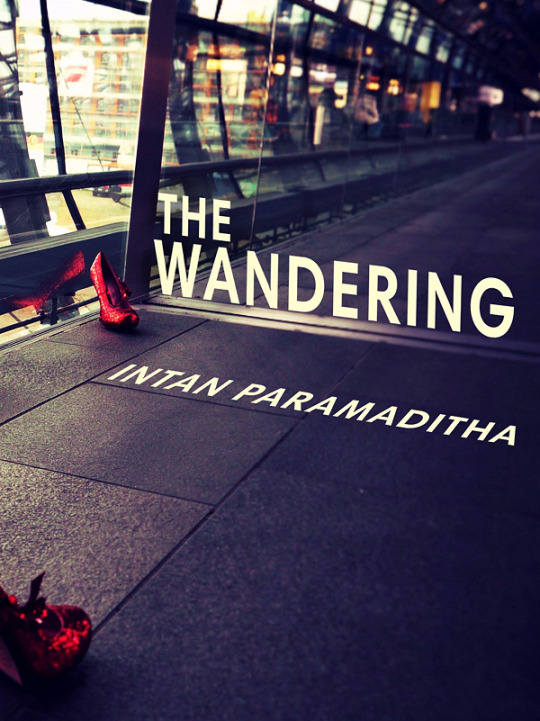
The Wandering by Intan Paramaditha
An adult fiction choose-your-own-adventure type of book drawing on the Indonesian author’s ‘A Red Shoe Odyssey’ visual project. I ended up taking a sapphic route.
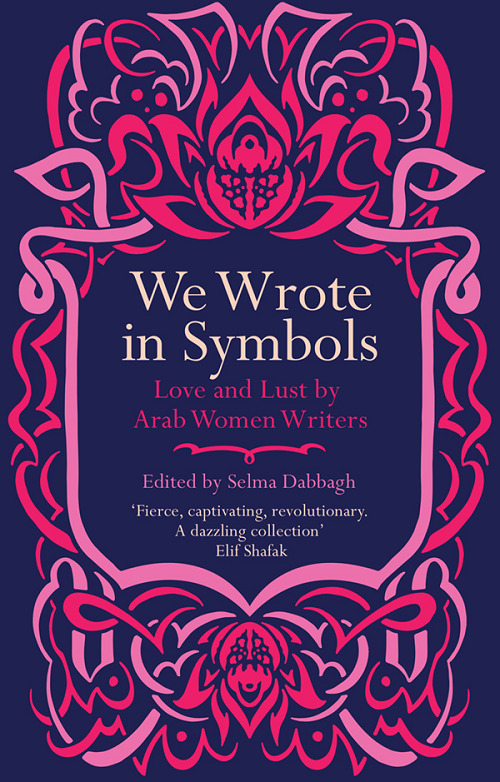
We Wrote in Symbols: Love and Lust by Arab Women Writers
Across millennia, lands, and language (writing from Arabic, English and French) the sensuous anthology displays the long history, depth, and varied expression of the erotic in writing by women (also one non-binary writer) of Arab heritage.
3 notes
·
View notes
Text
Choti Umar – Part 08 – چھوٹی عمر – Bold Novel
Choti Umar – Part 08 – چھوٹی عمر – Bold Romantic Urdu Novel
سردار ڈاکو مجھے کسی بھی طرح کی رائے دینے کو تیار نہیں تھا۔ اس نے فیصلہ کر لیا تھا کہ وہ اور اس کے تینوں ساتھی مل کر میرے ساتھ کھیل کھیلیں گے اور جب ان کا دل بھر جائے گا تو وہ مجھے سندھ میں بڑے سائیں کی حویلی میں لے جائیں گے۔ میں مجبور تھی میرے پاس ان کی بات ماننے کے سوا کوئی چارہ نہیں تھا۔
Urdu Novel
انہوں نے میرے محافظ ساگر کو اٹھا کر…

View On WordPress
0 notes
Text
Meena Kumari in “Chalte chalte yunhi koi” (“Pakeezah”, 1972)
youtube
Meena Kumari (1933-1972), one of the greatest Indian actresses of the last century, in an iconic scene and song from the classic Indian movie Pakeezah (The Pure One-1972, written, directed, and produced by Kamal Amrohi).
Meena Kumari plays in this movie Sahibjaan, a tawaif. The tawaifs were courtesans who catered to the nobility of the Indian Subcontinent in the Mughal and post-Mughal eras and were trained in music, danse, theater, and Urdu literature. An orphan, Sahibjaan lives since her childhood in a kotha (brothel), but she wants to escape from her fate.
According to the website of the University of Iowa ( https://indiancinema.sites.uiowa.edu/pakeezah ):
““I’ve seen your feet; they’re very lovely. Don’t set them down on the earth—they’ll get soiled.” This metaphorical warning-note, penned by a romantic stranger and left between the toes of a sleeping woman in a railway compartment, forms a much-underscored motif in this classic courtesan film—the final collaboration between the great actress and dancer Meena Kumari and her former husband, actor and director Kamal Amrohi. Like MOTHER INDIA, this film coexists with its own legend involving the offscreen lives of the director and star, who planned it together in the late 1950s but whose marriage broke up around the time that filming began in 1964. Kumari (who was also a talented Urdu poet under the pen name Naaz) then purportedly became an alcoholic, but eventually came back to complete the film shortly before her premature death in 1972; aficionados may try their luck at identifying—from Kumari’s pained and sometimes mask-like face—which scenes were shot when.
The central theme of the film is the struggle for respectability of a tawai’if, an Indo-Islamic courtesan trained in poetry, music, and dance—a glamorous “public woman” whose career was to be an elegant companion (and potential lover) to affluent men, but for whom a “respectable” marriage and home was out of the question. Her beautiful feet—apart from being an erotic fetish—represent her mastery of the art of North Indian classical dance or Kathak, which tawai’if’s preserved and nurtured for several centuries. The “earth” that such feet must perforce touch, however, is ruled by patriarchal society with its crippling double-standards, which decreed that respectable women (who lived in parda or seclusion) could seldom be interesting to men, and that interesting women were seldom respectable. All courtesan fiction struggles with this divide, which forms a principal theme of one of the earliest and most famous Urdu novels, Mirza Mohammed Hadi Ruswa’s UMRAO JAN ADA (1905; itself later filmed several times; see notes on UMRAO JAAN). PAKEEZAH offers another variation on the theme.”
See also about Pakeezah the paper of Richard Allen and Ira Brashkar Pakeezah: Dreamscape of Desire, on https://www.academia.edu/36264030/Pakeezah_Dreamscape_of_Desire
In the iconic scene of this video Sahibjaan/Meena Kumari sings and dances for the “villain” of the movie, an aristocrat (Nawab) named Zafar Ali Khan (played by Kamal Kapoor), who wishes to own her. The ambiguities and dynamics of the situation and of the relationship between the two are depicted in excellent way in this scene, which takes place at the Gulabi Mahal (Pink Palace) of Luchnow. According to the paper of Allen and Brashkar:
“The Gulabi Mahal (the Pink Palace) at Lucknow evokes a more rarified atmosphere. In Amrohi’s imagination, the space of the kotha is here fused with the idea of a Greek temple where the central colonnaded performance space doubles as a space of worship to the divine feminine, and discrete spaces are orchestrated in a theatrical hierarchy from the outer court with its fountains at the entrance to the inner sanctum sanctorum, which houses the bedroom of the courtesan, essentially off limits to all but the chosen client, and separated from the main performance space by a lighted causeway between reflecting pools of water.The Pink Palace is a sublime temple of femininity, whose fountains, atriums, reflecting pools form a microcosm of artifice that rivals that of the natural world. Indeed, even the moon appears artful in this landscape and the saturated deep blue sky, a studied backcloth to the whole.”
But, as the same article continues a bit further, the Pink Palace is also a prison for Sahibjaan:
“Meanwhile, for Sahibjaan whose desire for self-fulfillment has been awakened, the Pink Palace becomes a prison. In a metaphor that recurs in the film, and echoes throughout the genre, she is likened to a bird in a gilded cage from which she yearns to escape...
...The quality and texture of her performances for him [the Nawab] are now markedly different from her earlier ones. Gone is the vivacity and vibrancy of an Inhin logon ne or a Thade rahiyo as she mournfully sings the haunting Chalte Chalte, which articulates her desire for freedom and happiness.Yet it also returns us to the pathos of her entrapment in a manner that evokes the equation of the courtesan and the flickering flame that opens the film. At the conclusion of the performance, as she sings Yeh chiraag bujh rahein hain / Mere saath jalte jalte (These lamps are fading / As they burn with me), she hears the screech of a train whistle. It is impossible initially to discern whether it is somewhere physically off-screen or within her mind.The camera cranes upward from the floor to the red chandelier, recalling the red aalta of her feet.The lights darken as the escalating screech of the train whistle resounds through the performance space, taking over the song and abruptly bringing the dance to an end. When the camera cranes down again, the dancers have disappeared from the floor.The camera then tracks forward towards the fountains that abruptly stop playing as the whistling ends. It is as if the space in which she dwells, her erstwhile tomb, is now cut to the measure of her desire. She rushes to the balcony to see the train she has seen before, but this time it is motionless, silhouetted against the sky, almost as if waiting for her to come to her balcony before it can leave.Though real, the train appears as if in a vision, so detached is the spectacle from the space she inhabits.What is finally required for Sahibjaan to escape her sealed world is a transformation of environment and character of a magnitude that challenges the tone in which the film has hitherto been cast.”
The lyrics of Chalte chalte yuhni koi were written by the Urdu poet Kaifi Azmi (1919-2002) and its music was composed years before the release of Pakeezah by Ghulam Mohammed (1903-1968). Although Meena Kumari was also a singer, the voice in the song is of the great Indian singer Lata Mangeshkar (1929-2022).
Unfortunately I couldn’t do anything with the advertisements at the end of the video.
I have found on the net the following transliteration and translation of the lyrics of Chalte chalte yuhni koi:
Chalte chalte, chalte chalte While walking, while walking
Yun hi koi mil gaya tha I met someone by chance
Yun hi koi mil gaya tha I met someone by chance
Sare raah chalte chalte Walking around the path
Sare raah chalte chalte Walking around the path
Wahin thamke reh gayi hai Right there it stood still
Wahin thamke reh gayi hai Right there it stood still
Meri raat dhalte dhalte This night of mine, which is fading away
Meri raat dhalte dhalte This night of mine, which is fading away
Joh kahi gayi na mujhse What I was unable to say
Joh kahi gayi na mujhse What I was unable to say
Woh zamaana keh raha hai The world is saying that
Woh zamaana keh raha hai The world is saying that
Ke fasana A story
Ke fasana ban gayi hai A story has been created
Ke fasana ban gayi hai A story has been created
Meri baat chalte chalte From those words of mine
Meri baat chalte chalte From those words of mine
Yun hi koi mil gaya tha I met someone by chance
Yun hi koi mil gaya tha I met someone by chance
Sare raah chalte chalte Walking around the path
Sare raah chalte chalte Walking around the path
Yun hi koi mil gaya tha I met someone by chance
Sare raah Around the path
Chalte chalte, chalte chalte While walking, while walking
Sare raah Around the path
Chalte chalte, chalte chalte While walking, while walking
Chalte chalte, chalte chalte While walking, while walking
Yun hi koi mil gaya tha I met someone by chance
Yun hi koi mil gaya tha I met someone by chance
Shab-e-intezaar aakhir The night of waiting
Shab-e-intezaar aakhir The night of waiting
Kabhi hogi mukhtasar bhi Will after all shorten soon
Kabhi hogi mukhtasar bhi Will after all shorten soon
Yeh chirag These lamps
Yeh chirag bujh rahe hai These lamps are dying
Yeh chirag bujh rahe hai These lamps are dying
Mere saath jalte jalte As they burn alongside me
Mere saath jalte jalte As they burn alongside me
Yeh chirag bujh rahe hai These lamps are dying
Yeh chirag bujh rahe hai These lamps are dying
Yeh chirag bujh rahe hai These lamps are dying
Yeh chirag bujh rahe hai These lamps are dying
Yeh chirag bujh rahe hai These lamps are dying
Yeh chirag bujh rahe hai These lamps are dying
Mere saath jalte jalte As they burn alongside me
Mere saath jalte jalte As they burn alongside me
Yun hi koi mil gaya tha I met someone by chance
Yun hi koi mil gaya tha I met someone by chance
Sare raah chalte chalte Walking around the path
1 note
·
View note
Text
0 notes
Text
Gumnaam by Ujala Naz Novel Complete Pdf Download
Complete Online Urdu Novel in Pdf Gumnaam written by Ujala Naz Pdf Novel based on Suspenseful Social Romantic Free Download Urdu Novels and Urdu Novels Online Reading.
It is a suspenseful and romantic story that begins with the accidental death of Liyana Imran. Free Pdf Download Urdu Novels Complete Posted on Novel Bank.
Novel Bank present a best urdu novels in different catagories. secret…
View On WordPress
0 notes
Text
Premchand Book Online available at rektabooks.com
About Book प्रेमचन्द को पढ़ना गुलाम भारत के मानस को पढ़ना है, उसकी कशमकश को, 'स्वराज्य' सम्बन्धी उसकी चिन्ताओं और दुश्चिन्ताओं को, किसान और किसानियत तथा उससे जुड़�� तमाम परेशानियों को चीन्हना है। इस पुस्तक में हमें न केवल प्रेमचन्द के कई रूपों (व्यक्ति, लेखक, पत्रकार, विचारक, सुधारक, व्यवस्थापक आदि) के दर्शन होते हैं,
#urdu novels#bold romantic urdu novels#godan#godan in hindi#godan premchand#Rashmi Rathi#Buy Godan by Prem Chand#गोदान - प्रेमचंद Godan#Buy Godan by Prem Chand.
1 note
·
View note
Text
1 note
·
View note